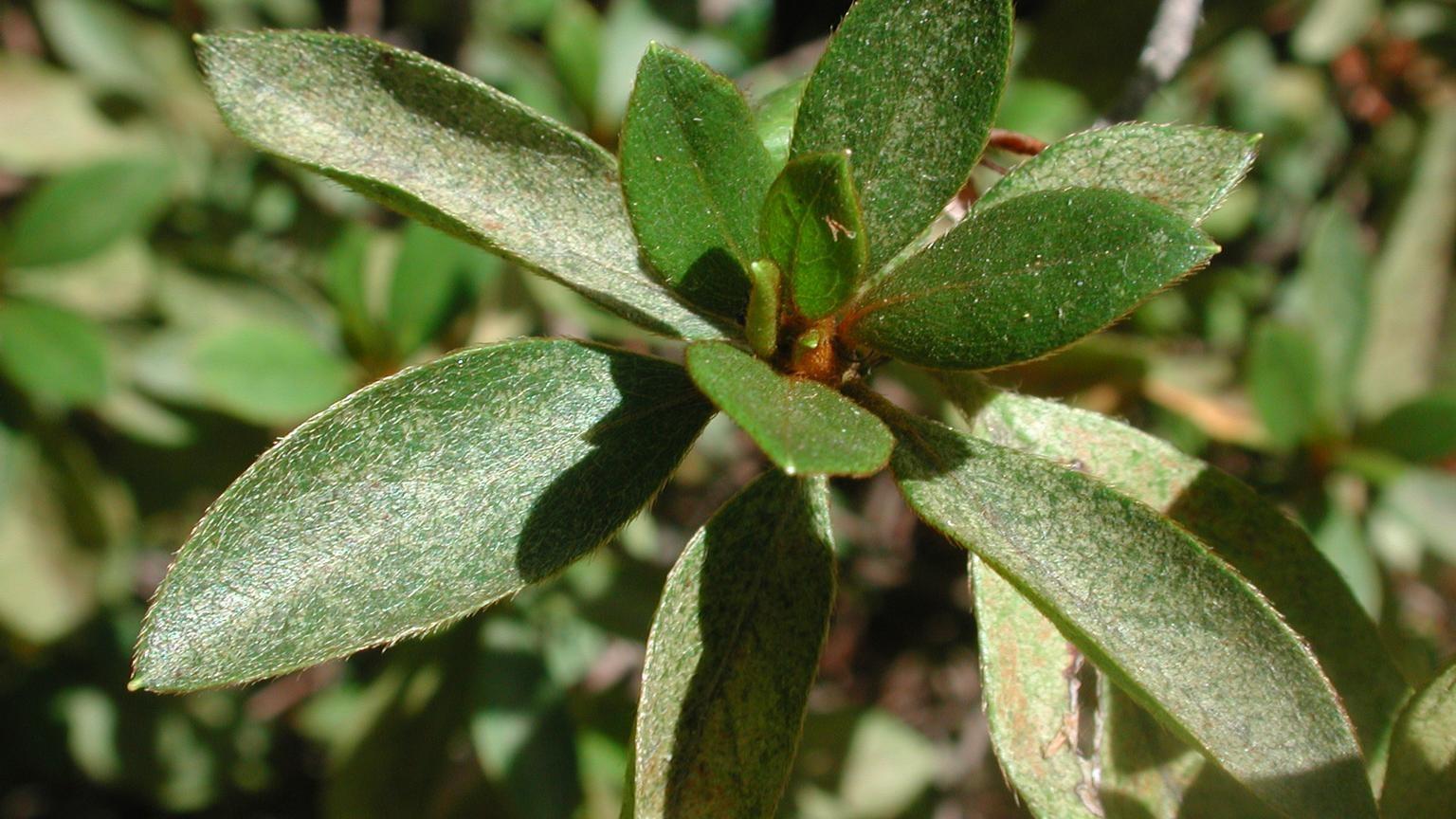Key points
- Lace bugs are small, inconspicuous, plant-feeding bugs. Most pest species are about three-sixteenths of an inch in length when mature.
- Three species are common shrub pests: the azalea lace bug, andromeda (Pieris) lace bug, and the rhododendron lace bug.
- Several species also attack shade trees. These include the sycamore, hawthorn, elm, walnut, oak, willow, poplar, birch, basswood, hackberry, buckeye, cherry, and alder lace bugs. Of these, the hawthorn and sycamore lace bugs are particularly damaging in Maryland. The hawthorn lace bug also attacks pyracantha, quince, and cotoneaster.
- Lace bugs are named for their lace-like wings. The immatures or nymphs, lack wings and are usually spiny.
- Most lace bugs live on the lower surface of leaves and deposit their black eggs there.
Lace bug appearance and habits
- Lace bugs are so named because the wings are formed of a lace-like network of veins and membranes. Some areas, especially on the wings, may be translucent.
- The immatures (nymphs) lack long wings and are usually spiny.
- Most lace bugs live out their lives on the lower surface of leaves. For this reason, they are not easily seen. They deposit their black eggs and on or in the lower surface of leaves. Black fecal matter (tiny stationary spots) is also found on the underside of leaves.
- They obtain food by piercing the leaf with a slender “beak” and sucking out the contents of the plant cells.
- Lace bugs pierce the leaf with long, slender mouth parts and suck out the cellular contents. Feeding damage first appears as white stippling or tiny white spots. These spots later merge and leaves turn yellow.
- Severe infestations may cause premature leaf drop.
Lace bug damage
- Adults and nymphs suck chlorophyll from the underside of leaves causing tiny white spots.
- This causes the upper surface to appear stippled with minute white spots. Later, these small spots merge and the leaves turn yellow.
- Heavily infested plants become unsightly, looking washed out and unhealthy, and vitality is reduced.
- Severe infestations may cause premature leaf drop on shade trees, and even the death of small shrubs.
Lace bugs on broadleaved shrubs
Lace bugs can attack andromeda (Pieris japonica), azalea, and rhododendron. As on trees, damage first appears as stippling or tiny white spots. These spots later merge, giving the leaves a bleached, white appearance. The leaves then turn yellow or brown. Stressed broadleaved evergreen shrubs grown in full sun suffer the most damage from the insect.
Management
Biological management
-
Natural enemies and predacious beetles feed on lace bugs. If you notice this behavior do not spray.
Chemical management
- Begin monitoring for lace bugs in early May. Damage usually begins on older leaves and later on new growth.
- Large trees do not have to be treated for lace bug. The damage they cause does not impact the health of the tree.
- The underside of the leaves of young trees can be treated with insecticidal soap or horticulture oil. Read and follow the label directions to prevent damaging the leaves.
- A currently registered systemic insecticide may be necessary where coverage of the undersides of leaves is difficult.
- On broadleaved shrubs when lace bug populations are high, sprays of horticultural oil (at a 2% summer rate) or insecticidal soap will control lace bugs if the lower surfaces of the leaves where lace bugs are active are thoroughly covered.
- Trees and shrubs are visited by pollinators. Be sure to observe all cautionary statements on labels to protect pollinators.
Rev. 2020
